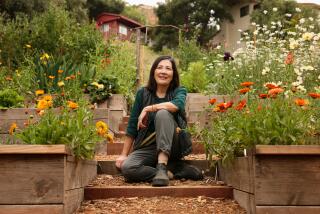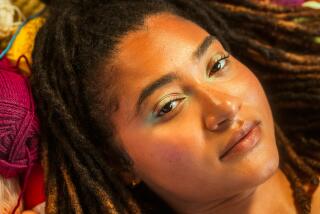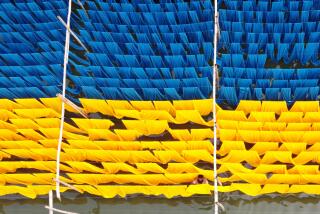CLOSE-UP
Sally Fox envisions a day when her fields will be a cavalcade of color. But she’s going about it the hard way: She’s planting cotton.
“My hobby was hand-spinning cloth, weaving and knitting,” says Fox, 36. “I always thought about making fabric that didn’t have to be dyed.”
Brown cotton occurs naturally and growers have experimented with various hues, but the colored fibers were always too short for machine weaving. Ten years ago, Fox, a biological insecticides researcher for Mycogen Corp. in San Diego, set out to create a machine-spinnable, colored cotton plant. Three years later, she made a breakthrough: “I found green lint on two of the brown plants,” she says. “I realized green was a recessive gene of brown-colored cotton. It was like Christmas.”
In 1986, Fox moved her operation to cotton country: Wasco, about 25 miles northwest of Bakersfield. She leased 25 acres, got a job and began growing more colored cotton. “I worked on it all the time. I took vacations in my cotton fields. All my friends thought I was crazy. They don’t now.” Within a few years, she had bought 160 acres in Richgrove, and soon was contracting out production of her brown and green cotton to farms in Arizona and Texas. Last year, she turned her first profit. This year, she’ll harvest several thousand acres, which will be woven and sold through Seventh Generation, a mail order company. The Fox Fibre trademark of her new company, Natural Cotton Colours, will also go in clothes for Fred Segal and Esprit’s Ecollection this fall.
Fox is perfecting colors ranging from red to yellow-green, gray and orange. “My butterscotch looks so rich it makes me hungry. I still haven’t got a true blue, black or purple figured out, but I will.”
More to Read
Sign up for The Wild
We’ll help you find the best places to hike, bike and run, as well as the perfect silent spots for meditation and yoga.
You may occasionally receive promotional content from the Los Angeles Times.






